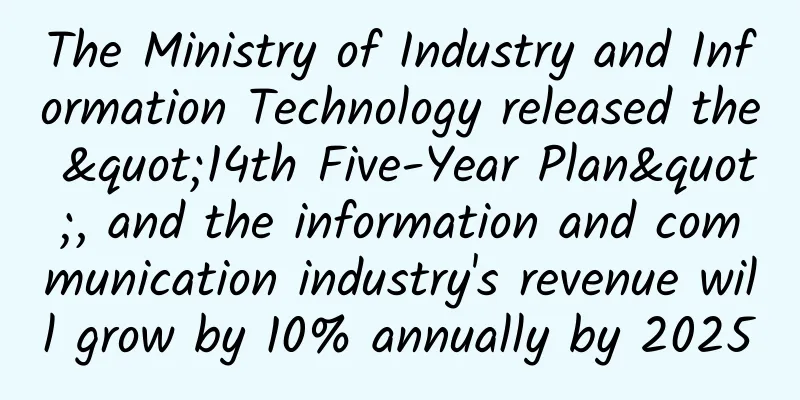Seven trends revealing the future of mobile app development

|
【51CTO.com Quick Translation】 Undoubtedly, mobile application development is a growing and lucrative industry, with the value of mobile applications downloaded every year reaching 179 billion. While Gmail, Facebook, Instagram, YouTube, and Twitter have created the online social world, map apps, shopping apps, and payment apps have made our lives more convenient while saving a lot of time and money. Many reasons have pushed the mobile application development industry to a peak, and many mobile application companies are willing to pay a lot of money to have top developers build their applications.
[Translated by 51CTO. Please indicate the original translator and source as 51CTO.com when reprinting on partner sites] |
<<: Network monitoring tool! Don't miss these 7 free open source tools
Recommend
H3C iMC leads the Chinese network management software market for three consecutive years
Recently, International Data Corporation (IDC) re...
Justg: Russia CN2 GIA line VPS is online with annual payment starting from US$39.99
Last year, the blog shared the news of Justg'...
A Visual Guide to Kubernetes Networking
The network inside Kubernetes is not much differe...
4G is still growing, but 5G is a bit awkward. Has the promised 5G phone replacement trend come to an end?
Last week, the Ministry of Industry and Informati...
Huawei awards the father of Polar code to pay tribute to basic research and exploration spirit
[Shenzhen, China, July 26, 2018] Today, Huawei he...
The Internet of Things has become a popular entry point for domestic operators’ eSIM technology
Apple phones have promoted the development of SIM...
Zhang Ping, academician of the Chinese Academy of Engineering: 6G faces dimensional disaster
5G is developing in full swing. Currently, the nu...
Connecting new momentum, intelligent manufacturing wins the future: Huawei Intelligent Manufacturing Network Innovation Digital Summit 2022 was successfully held
On October 28, Huawei Intelligent Manufacturing N...
SoftShellWeb: $3.5/month KVM-1GB/15GB/2TB/San Jose & Netherlands Data Center
SoftShellWeb recently launched several VPS monthl...
Face Detection: Retina FaceNet
retinaface face detection algorithm dessert I hav...
Read this article only three times and you will never forget network layering!
This article is reprinted from the WeChat public ...
Custom Traefik (local) plugins
[[442556]] Traefik has implemented a lot of middl...
5G will become the golden key to open the era of the Internet of Things
The Internet of Things is not new. At the beginni...
RAKsmart cloud server flash sale starts at $1.99/month, popular VPS host $0.99/month, US/Hong Kong/Japan/Singapore data center
At the beginning of the month, the tribe shared i...
China's 6G network will be commercially available in 2030 to help realize the "intelligent connection of all things"
On June 6, the IMT-2030 (6G) Promotion Group offi...






![[11.11] HostXen's bandwidth upgrade, recharge 100 yuan and get 20 yuan free, and add a new data center in Tokyo, Japan](/upload/images/67cabd2da9a2e.webp)


